:max_bytes(150000):strip_icc()/pistons---crankshaft-865915148-5b009e7deb97de003d950746.jpg)
4 Engine Parts Pistons, Cylinders, Rods and a Crankshaft
The piston is connected to the crankshaft through a connecting rod, often shortened to rod or conrod.These parts together are known as the piston assembly.Both ends of the connecting rod are free to pivot: The part of the connecting rod which connects to the piston is called the small end, and the end that attaches around the crankshaft is called the big end.
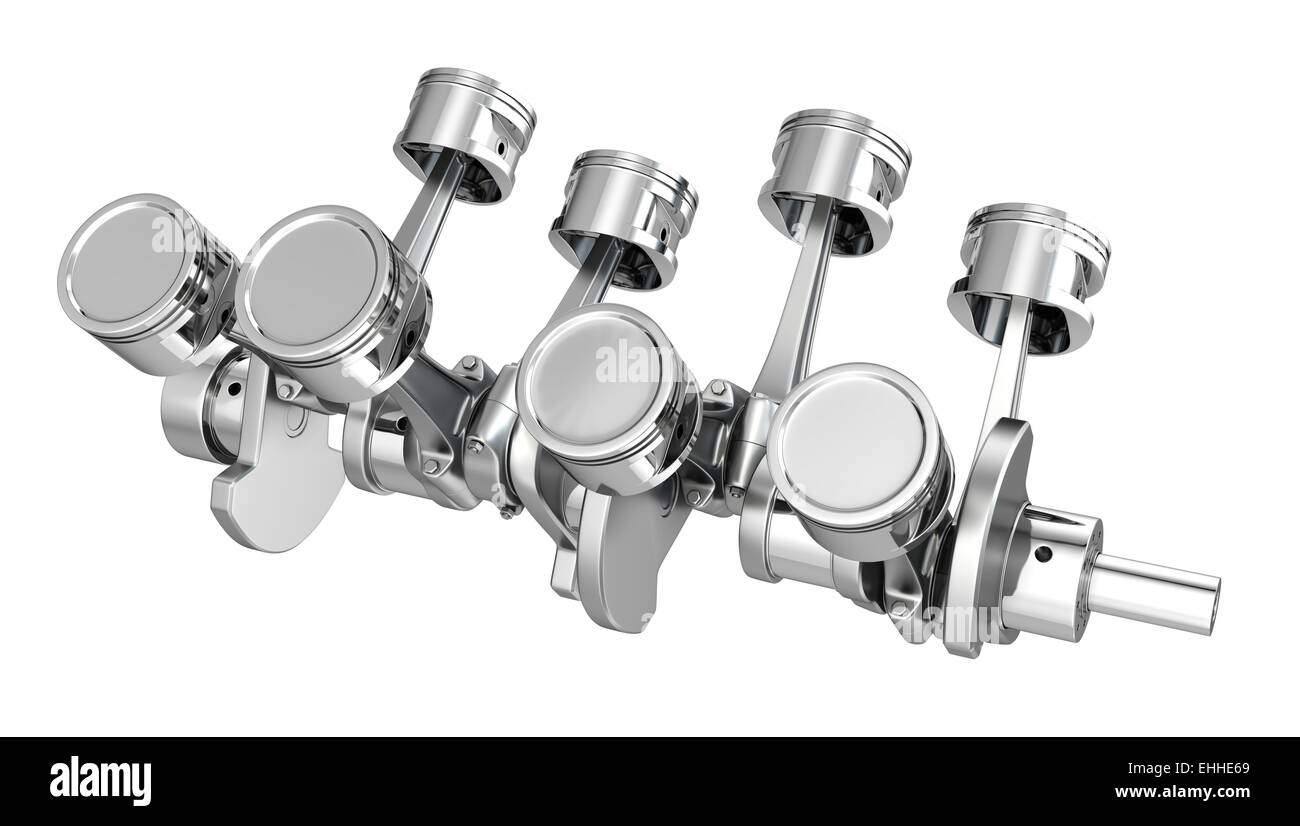
V8 engine pistons on a crankshaft Stock Photo Alamy
A crankshaft must be able to accommodate the force generated by the engine without being permanently deformed. It must also be flexible. The animation gives.
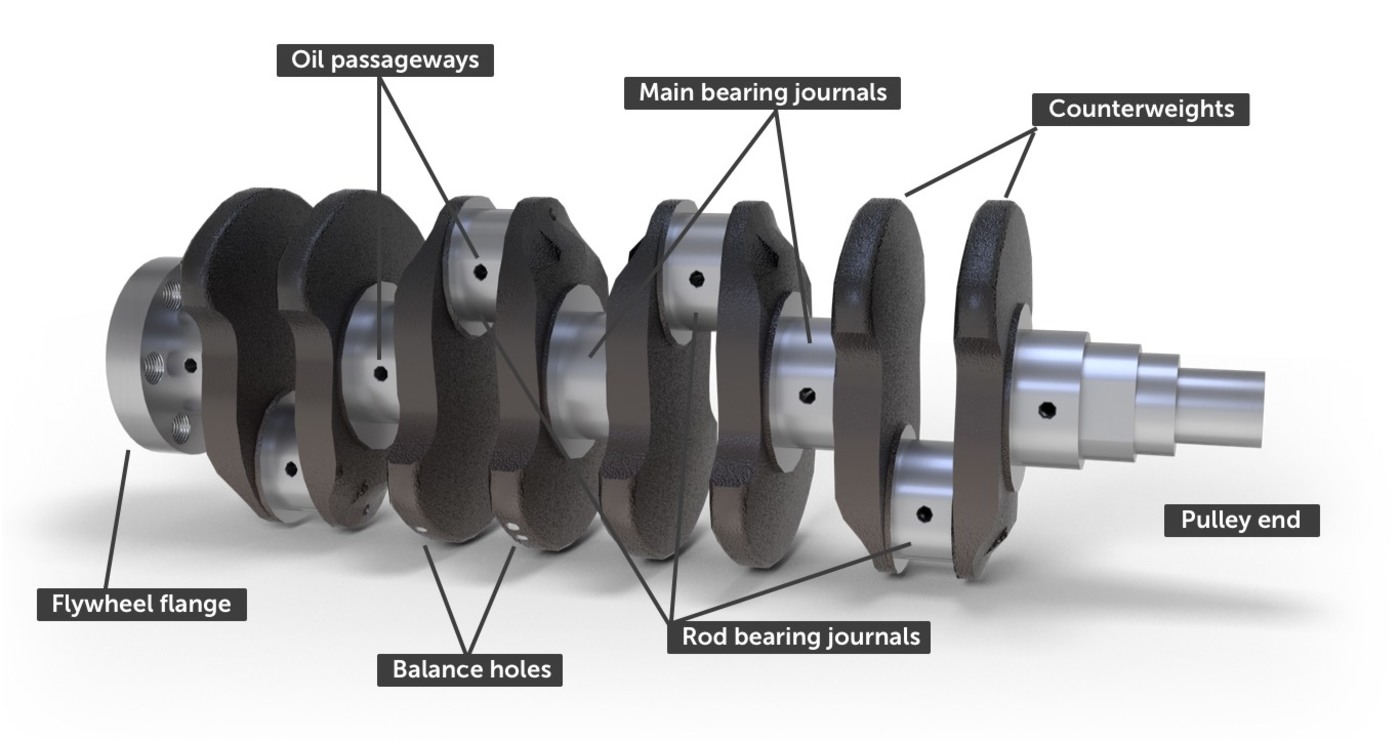
How the crankshaft works All the details (2022)
The crankshaft is a vital component of an engine, responsible for converting the reciprocating motion of the pistons into rotational motion. It plays a crucial role in the overall functioning of the engine. The crankshaft consists of several parts that work together to ensure smooth and efficient operation.These parts include the main journals, crankpins, counterweights, and connecting rod.

Engine Parts Pelaez & Rivera
Figure 2: TDC. The following description explains the not-so-obvious characteristics of the motion which the crankshaft / conrod mechanism imparts to the piston. Figure 2 shows a sectional end-view of a Crankshaft, Connecting rod and Piston (CCP) mechanism when the piston is at the furthest extent of its upward (away from the crankshaft) travel.

Engine pistons and crankshaft assembly. The crankshaft of the internal
The crankshaft is a rotating shaft driven by a crank mechanism. It is a mechanical unit that facilitates the transformation of the linear movement of the piston into a rotating motion. A crankshaft is an important part of an engine's power transmission system. Located within the engine crankshaft block it works by using a connecting rod to.

V8 engine pistons on crankshaft hires stock photography and images Alamy
What is an engine crankshaft? The crankshaft (sometimes spelt ' crank shaft ') transforms the linear motion of the pistons into a rotational motion that is transmitted to the load. A crankshaft has three main functions: To convert the reciprocating motion of the pistons into rotational motion. To transmit the power of an engine to the load.

Pistons Crankshaft. Image & Photo (Free Trial) Bigstock
Another important aspect of building stronger internals for a performance engine is the pistons and crankshafts. It is sometimes forgotten that a piston has an important role in upgrading the horsepower and torque figures for your engine. It may be partly down to the tight margins and tolerances that are needed to work in your application.
/engine-internals-56cb760a3df78cfb379d2755.jpg)
Pistons, Cylinders, Rods and a Crankshaft Engine Parts
No matter what you love, you'll find it here. Search Crankshaft And Pistons and more. Looking for Crankshaft And Pistons? We have almost everything on eBay.

Car Motor Engine Pistons With Crankshaft Isolated Stock Illustration
When the engine starts the flywheel provides a motion to the crankshaft. The crankshaft pushes the piston towards the top dead center for a power stroke. At this time the counterweight is at the lowest point. When the piston undergoes the power stroke and reaches the bottom dead center the heavier side of the counterweight reaches its topmost.
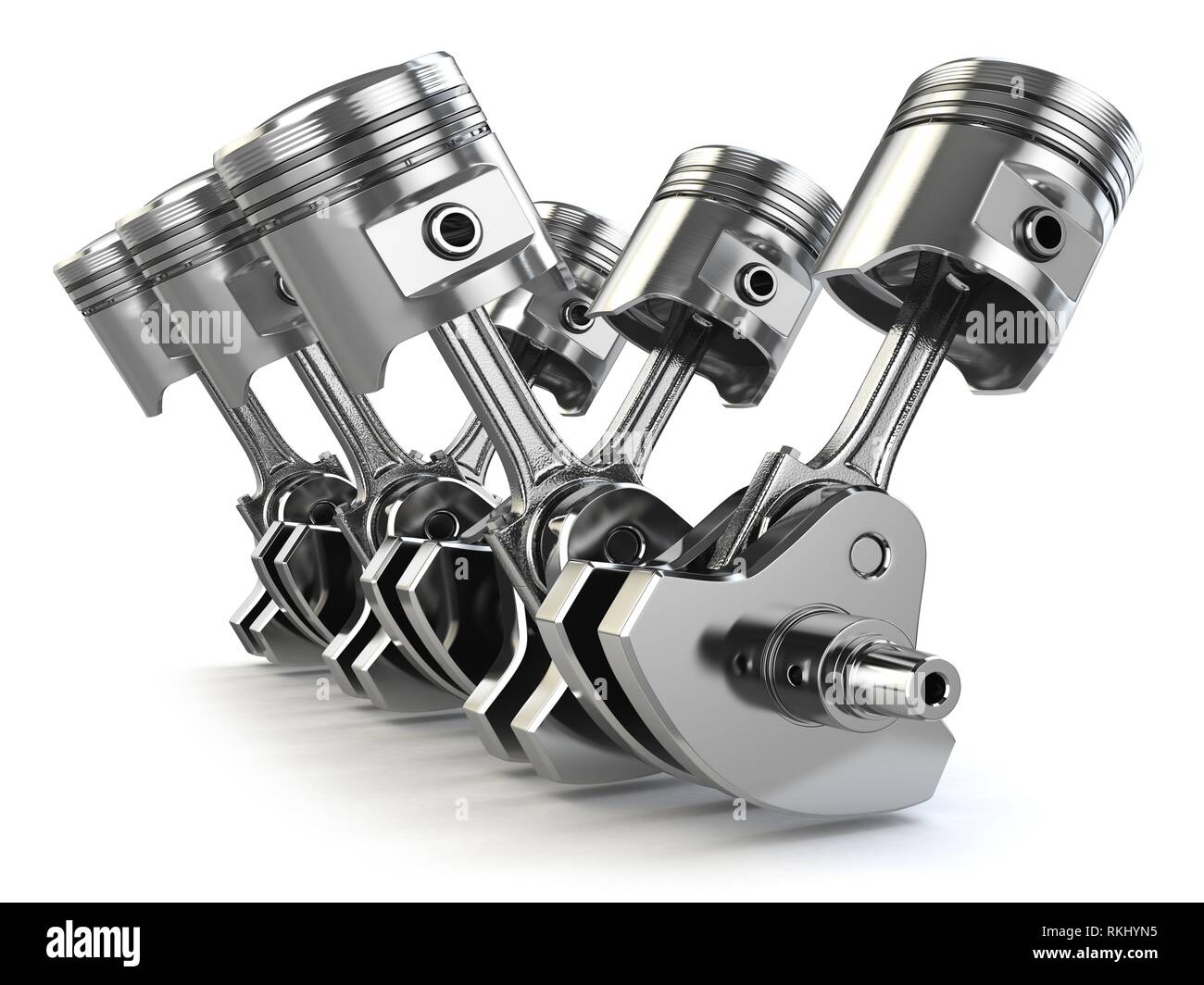
V6 engine pistons and crankshaft isolated on white background. 3d
Search from over 10 Million Auto Parts. Save Up to 80% Off Dealer Prices. Buy Discount Auto Parts Online Today!
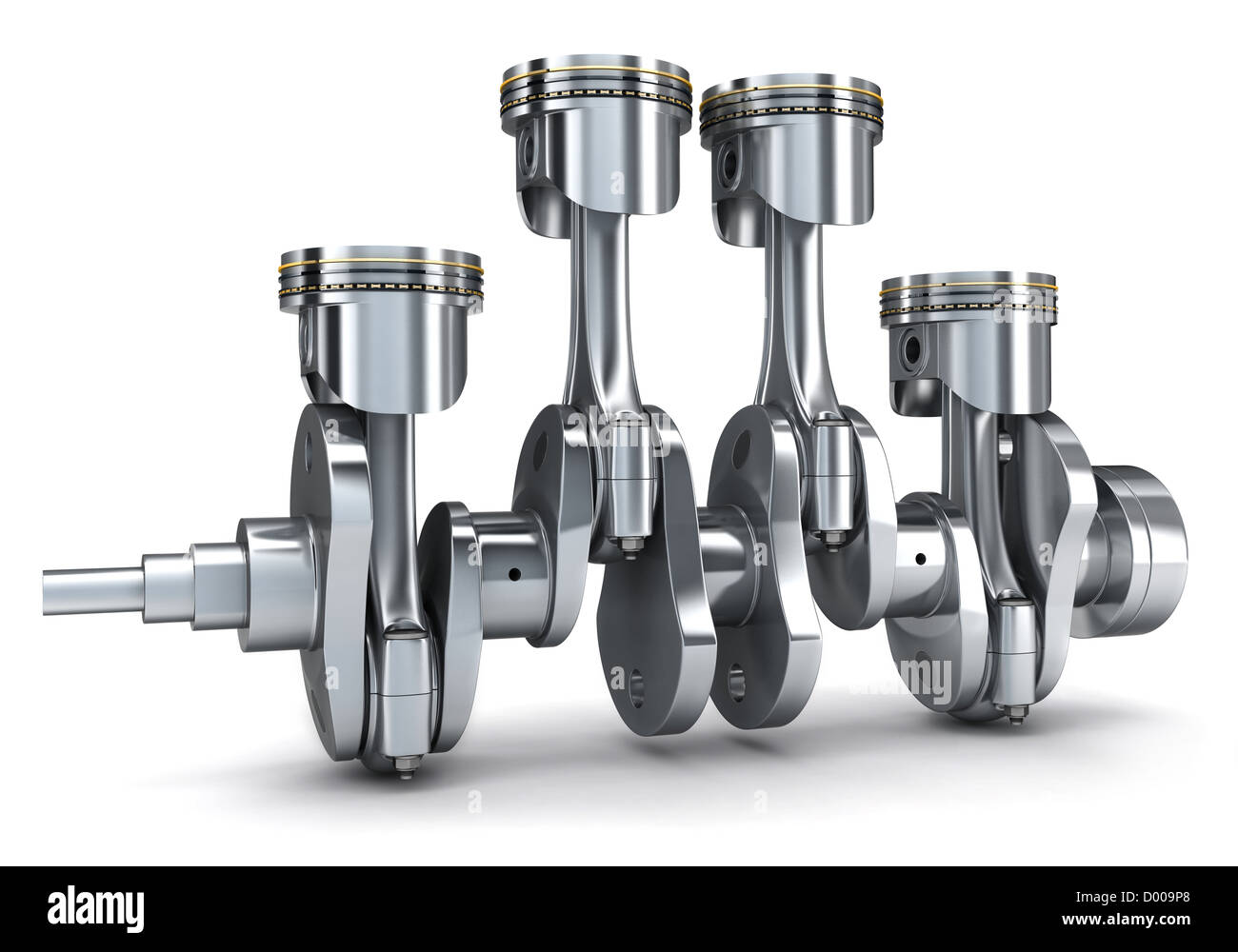
Crankshaft and pistons (done in 3d Stock Photo Alamy
Crankshaft (red), pistons (gray), cylinders (blue) and flywheel (black) A crankshaft is a mechanical component used in a piston engine to convert the reciprocating motion into rotational motion.The crankshaft is a rotating shaft containing one or more crankpins, that are driven by the pistons via the connecting rods.. The crankpins are also called rod bearing journals, and they rotate within.
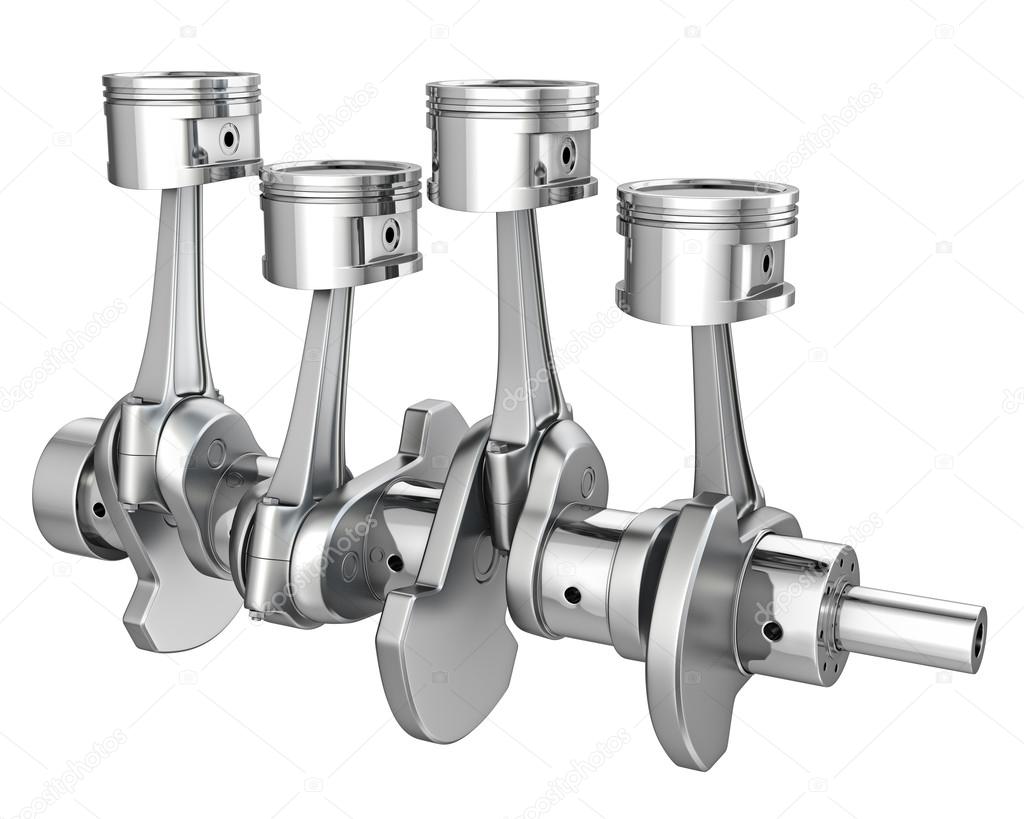
Engine pistons on a crankshaft — Stock Photo © Zelfit 14616161
Without a crank, a reciprocating piston engine is not able to transmit the piston reciprocating movement to the drive shaft. In simple terms, a reciprocating engine cannot move a vehicle without a crankshaft. Various engines go through a power cycle with different numbers of crankshaft revolutions. For example, a 2-stroke engine completes a.

Crankshaft and Pistons with Connecting Rods on the Table Stock Photo
schlol / Getty Images. The explosion that happens in the cylinder causes the piston to be thrust downward toward the inside of the engine. The connecting rod connects the bottom of the piston to a certain point on the crankshaft, transferring the energy of the combustion (the explosion in the cylinder) from an up and down movement of the piston and connecting rod to a rotational movement in.

Stock Video Engine pistons on a crankshaft 11491739
The crankshaft is a vital component of a car 's engine, responsible for converting the up-and-down motion of the pistons into rotational motion. It plays a crucial role in the engine's overall performance and efficiency. The crankshaft is typically made of high-strength steel and consists of several main journals and connecting rod journals.

ma yamaha crankshaft piston
The crankshaft is located in the engine of a vehicle and converts the force created by the engine's pistons moving up and down into a force that moves the wheels in a circular motion so the car can go forward. Located inside the car's engine, it is connected to all the pistons in the engine and to the flywheel.

V8 Engine Pistons Top View 3d Rendering Isolated On White Background
A crankshaft is used to convert reciprocating motion of the piston into rotary motion. The crankshaft in an engine is probably the most complex of all the shafts used in any machinery, and, as the name implies, it is far from being anywhere near a straight shaft. With the help of examples, crankshafts are classified depending on the type of.